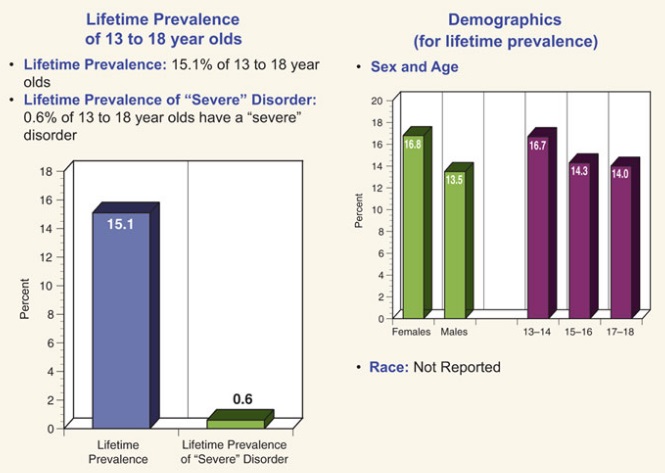Specific Phobia Among Children - Prevalence and Statistics
TweetSpecific phobia involves marked and persistent fear and avoidance of a specific object or situation. This type of phobia includes, but is not limited to, the fear of heights, spiders, and flying.
Specific phobia is a type of disorder in which the affected individual displays a marked and enduring fear of specific situations or objects. Individuals with specific phobias experience extreme fear as soon as they encounter a defined situation or object, a phobic stimulus. For example, an individual with a specific phobia of dogs will become anxious when coerced to confront a dog. The specific phobia triggers a lot of distress or significantly impairs an affected individual.
- Specific phobias are common. The prevalence rates of specific phobia in community samples range from 4% to 8%. Over the course of a lifetime, the prevalence estimates in community samples range from 7.2% to 11.3%.
- There are twice as many women with specific phobia than there are men with this disorder. The gender ratio variable varies depending upon the type of specific phobia. Approximately 75%–90% of people with the animal, situational, and natural environment types are female. Approximately 55%–70% of people with the blood-injection-injury subtype are female.
- According to these phobia facts, the most common specific phobias include the fear of animals, fear of the environment (fear of rain, earthquakes etc.), fear of blood/injury, fear of certain situations (claustrophobia, fear of traveling on bridges etc.), fear of death, fear of certain body sensations and fear of incontinence.
- On average, specific phobias begin in childhood, between seven to eleven years with most cases starting before age ten
- Approximately 5% of children and 16% of adolescents will have a specific phobia in their lifetime
- Girls are more likely to experience a phobia than boys at a rate of 2:1



Sometimes crying or laughing
are the only options left,
and laughing feels better right now.

Current Issue
 Self Help Leaflets Take the help of our self help leaflets or booklets. |
 The DG Magazine All about living with depression |












